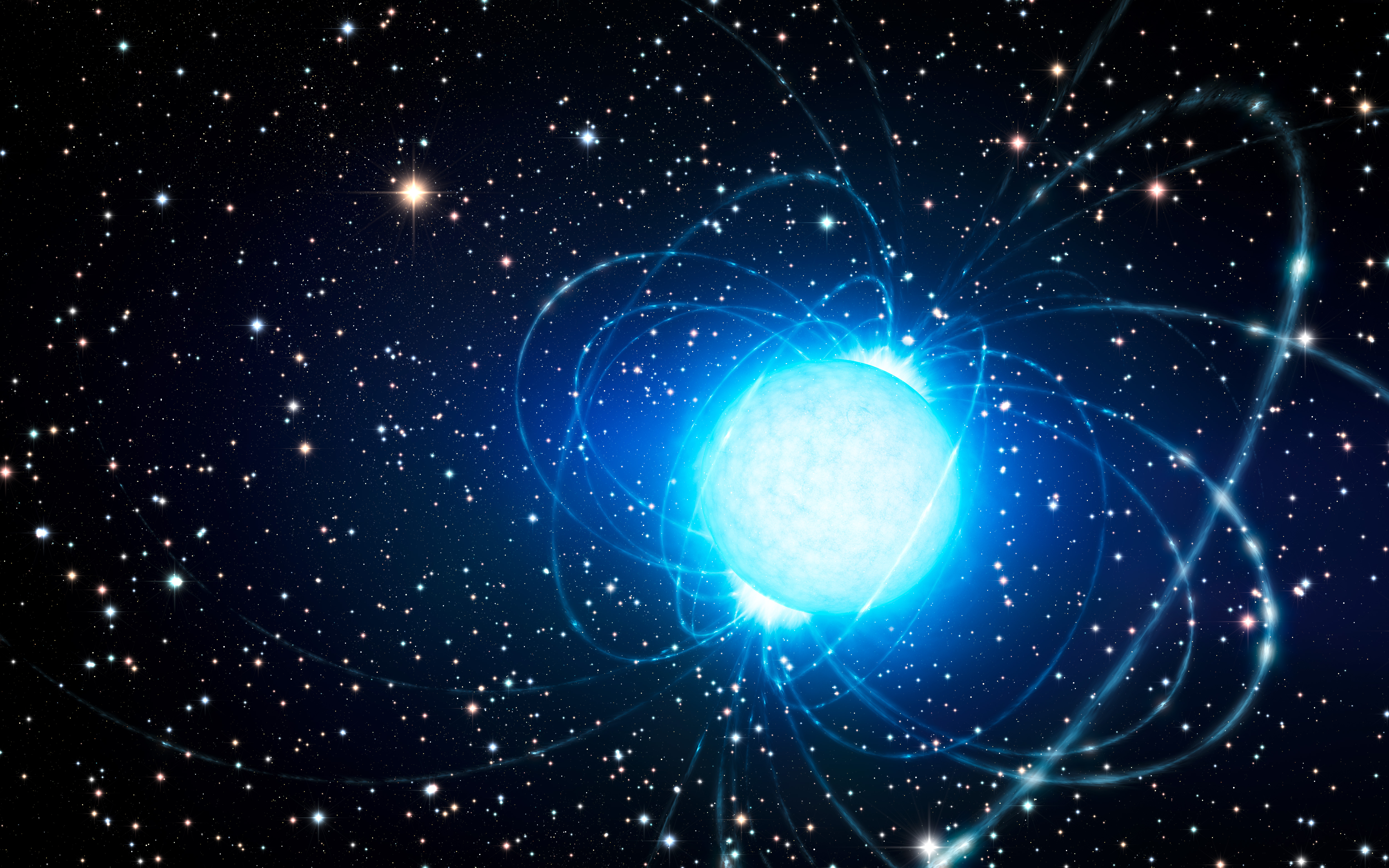Exploring Magnetars: The Universe's Magnetic Monsters
Published on 07 December 2024 🕒 10:35:00
By Luis Esteban - Just a random guy
The universe is full of wonders, but few celestial objects are as intriguing and enigmatic as magnetars. These ultra-magnetic stars are rare, powerful, and mysterious, capable of bending the very fabric of reality with their extraordinary properties. Let’s embark on a journey to uncover what magnetars are, their fascinating history, the mysteries surrounding them, and why they continue to baffle and inspire astronomers.
What is a Magnetar?
At its core, a magnetar is a type of neutron star, born from the remnants of a massive star that has gone supernova. When a massive star exhausts its nuclear fuel, its core collapses under gravity, leaving behind an incredibly dense core composed almost entirely of neutrons. If the conditions are just right, this neutron star can become a magnetar.
What sets magnetars apart is their magnetic field, which is the most powerful in the known universe—up to a quadrillion times stronger than Earth’s magnetic field. To put that into perspective, a magnetar’s magnetic field is so intense that it can disrupt electronic devices and strip atoms of their electrons from a distance of hundreds of thousands of kilometers.
 Magnetar artist representation
Magnetar artist representation
History of Magnetars: From Theory to Discovery
Theoretical Beginnings
The concept of magnetars was first theorized in 1992 by astrophysicists Robert Duncan and Christopher Thompson. They proposed that some neutron stars could have extraordinarily strong magnetic fields due to rapid rotation and convective motions during their formation.
Observational Breakthrough
The first confirmed magnetar was discovered in 1979 when a mysterious gamma-ray burst was detected coming from a source known as SGR 0526-66. It wasn’t until the 1990s, however, that magnetars were formally identified as a unique class of neutron stars, thanks to advancements in X-ray and gamma-ray astronomy.
Further Reading: History of Magnetar Discovery
Famous Examples of Magnetars
SGR 1806-20: The Giant Flare
In 2004, this magnetar produced the brightest cosmic event ever recorded. Its giant flare released more energy in a tenth of a second than the Sun emits in 100,000 years. The burst was so powerful that it temporarily disrupted Earth’s ionosphere, showcasing the immense power of magnetars.
 SGR 1806-20
SGR 1806-20
More: Wikipedia
XTE J1810-197: The Radio Magnetar
Discovered in 2004, this magnetar is notable for being one of the few known to emit pulsed radio waves, providing unique insights into magnetar behavior.
1E 1048.1-5937: A Persistent Mystery
This magnetar exhibits erratic changes in brightness and periodic bursts of X-rays, making it one of the most studied yet least understood magnetars.
Interesting Link: List of Known Magnetars
Mysteries of Magnetars
Despite decades of study, magnetars remain one of the least understood celestial objects. Here are some of the most puzzling questions that continue to intrigue astronomers:
- Origin of Magnetic Fields: How do magnetars generate such incredibly strong magnetic fields? Current theories involve rapid rotation and convective turbulence, but the exact mechanisms are still unknown.
- Giant Flares: What triggers the sudden and massive energy releases seen in magnetars like SGR 1806-20?
- Longevity: Magnetars are believed to have relatively short lifespans, with their magnetic fields decaying over time. Yet, some appear to persist longer than expected. Why?
Further Reading: Magnetar Mysteries
Trivia: Fascinating Facts About Magnetars
- Crustal Quakes: Magnetars occasionally experience starquakes, where their crusts crack under immense magnetic stress, releasing bursts of energy.
- Gravitational Waves: Some scientists speculate that the violent activity of magnetars could produce detectable gravitational waves.
- Invisible to the Naked Eye: Despite their incredible energy output, magnetars are incredibly small and distant, making them invisible to the naked eye.
- Magnetic Health Hazards: If a magnetar were located just 1,000 kilometers from Earth, its magnetic field would erase all credit card data and disrupt brain chemistry.
Learn More: Magnetar Trivia
Magnetars in Popular Culture
Magnetars have captured the imagination of writers, filmmakers, and game developers. They often appear in science fiction as the source of catastrophic events or as powerful cosmic entities. For example:
- In Star Trek: Voyager, a magnetar is depicted as a navigational hazard.
- The video game Halo features a storyline inspired by the destructive power of magnetars.
Bibliography and Useful Links
- NASA. (2024). Magnetars: The Most Magnetic Stars
- Thompson, C., & Duncan, R. (1992). The Magnetar Model
- ESA. (2024). Magnetar Mysteries
- ScienceDirect. (2024). Research on Magnetars
Explore More:
Conclusion
Magnetars are not just marvels of the universe—they are reminders of how much we have yet to learn about the cosmos. These magnetic monsters challenge our understanding of physics and continue to inspire new theories and discoveries. As telescopes grow more powerful and our technology advances, we may one day uncover the secrets of these extraordinary stars. Until then, magnetars remain one of the greatest enigmas of the universe.
